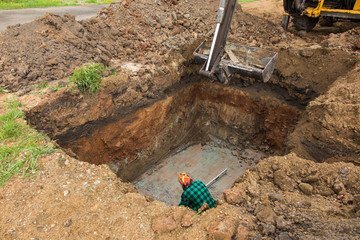When you're planning a septic installation in the beautiful neighborhoods of Hawthorne and Chappaqua, NY, you're not just installing a wastewater management system; you're ensuring the health and sanitation of your home environment. It's a significant project that requires careful consideration and understanding of the local regulations, the unique conditions of your property, and the demands of your household.
Understanding Local Regulations
Each municipality has specific regulations regarding septic system installation, including permits, design requirements, and inspections. It's essential to familiarize yourself with the local health department's guidelines. These regulations ensure that your septic system is not only safe for your household but also for the environment.
Assessing Your Land
The layout and composition of your property play a crucial role in where and how your septic system will be installed. Factors such as the size of your lot, the soil type, the water table level, and the proximity to water bodies must be considered. A percolation test, often required by local regulations, will determine the soil's absorption rate, which is critical for the design of your system.
Sizing Your System Appropriately
The size of your septic system should match the needs of your household. Overloading a system can lead to failure, while an oversized system can be unnecessarily costly and inefficient. The number of bedrooms in your home typically determines the size of the septic system you will need, as it's an indicator of potential occupancy.
Choosing the Right Type of System
There are various types of septic systems available, each designed to accommodate different site conditions and regulatory requirements. Traditional septic systems are common, but alternative systems may be necessary if your property has limited space or if the soil conditions are not ideal for a conventional system.
Considering Future Access for Maintenance
Regular maintenance is key to the longevity of your septic system. When planning your installation, consider the accessibility of the tank for pumping and the drain field for inspections. Adequate access will not only facilitate maintenance but also help avoid damaging your landscape in the future.
Involving Professionals in the Design and Installation
Professional involvement in the design and installation of your septic system is crucial. Experts in the field have a comprehensive understanding of the technical aspects, as well as the regulations that govern septic systems in New York. They can ensure that your system is designed and installed correctly, providing peace of mind and longevity for your system.
Related: 5 Tips To Prepare For A Septic Tank Installation In The Chappaqua, NY, Area
Budgeting for the Entire Project
Cost is a significant factor in planning your septic system installation. It's essential to budget for the entire project, including the design, permits, installation, and landscaping post-installation. It's also wise to consider the long-term costs of operation and maintenance when budgeting for your system.
Landscaping Considerations Post-Installation
After installation, restoring or improving your property's landscape may be necessary. Plan for this phase of the project, considering how to best protect the septic system while creating an aesthetically pleasing and functional outdoor space.
Planning for Potential Disruptions During Installation
Installing a septic system can be disruptive to your property. Expect some excavation and heavy equipment, which may temporarily affect your daily routine and access to parts of your property. Scheduling the installation during a time that's least disruptive for your household can help manage this impact.


